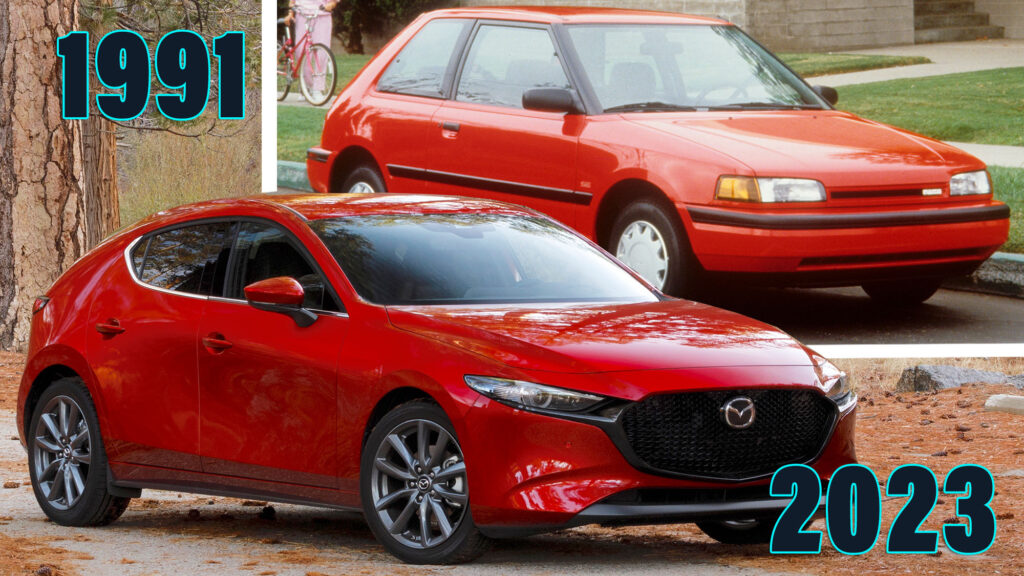How do you identify a car when it’s heading toward you on the road? In most cases it comes down to a familiar corporate radiator grille. The use of a grille as a tool to help us tell one automaker’s car from another is so central to modern car design that even EVs, which have no radiator and no need for a grille, mostly still retain a grille shape, but with a solid center.
Grilles have grown markedly in recent years, and not only on BMWs. But if you think grilles from 10 years ago look tiny next to their modern equivalents, you’ve probably forgotten what cars looked like back in the 1990s. Sure, automakers like Mercedes and Rolls-Royce still proudly strapped a big slab of chrome (or plastic chrome) to the front end of their cars, but most hatchbacks and sedans of that time had tiny grilles, and some appeared to have none at all.
Ducting all the required cooling air from a hole in the bumper rather than a traditional grille opening might have been common in sports cars and supercars but it was unusual in more practical vehicles and the trend helped usher in a very different look for passenger cars during the 1990s. Unfortunately, when that look become the norm, cars started to lose their identity and automakers began reintroducing increasingly stylized grilles to inject some personality into their designs.
Check out this gallery of cars from the 1990s and their modern equivalents and decide for yourself whether, when it comes to grilles, bigger is better.
1. Acura Integra
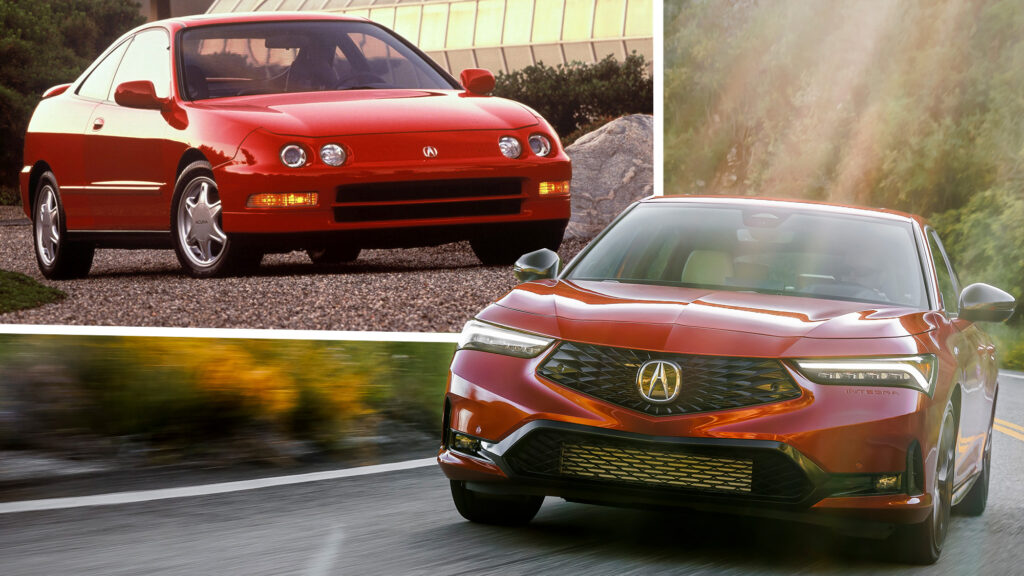
Related: The Lit Grille Design Trend Is On Fire Right Now
Acura’s Integra arrived in 1985 with a pop-up lamps and a very slim grille, and by the time the second-generation car arrived in 1989 there was no visible grille at all above the bumper line.
That love for the clean look carried over to the North American (but not Japanese) third-gen car from 1993, but fast forward to 2023 and the reborn Integra, and grilles are loud and proud.
2. Toyota Avalon
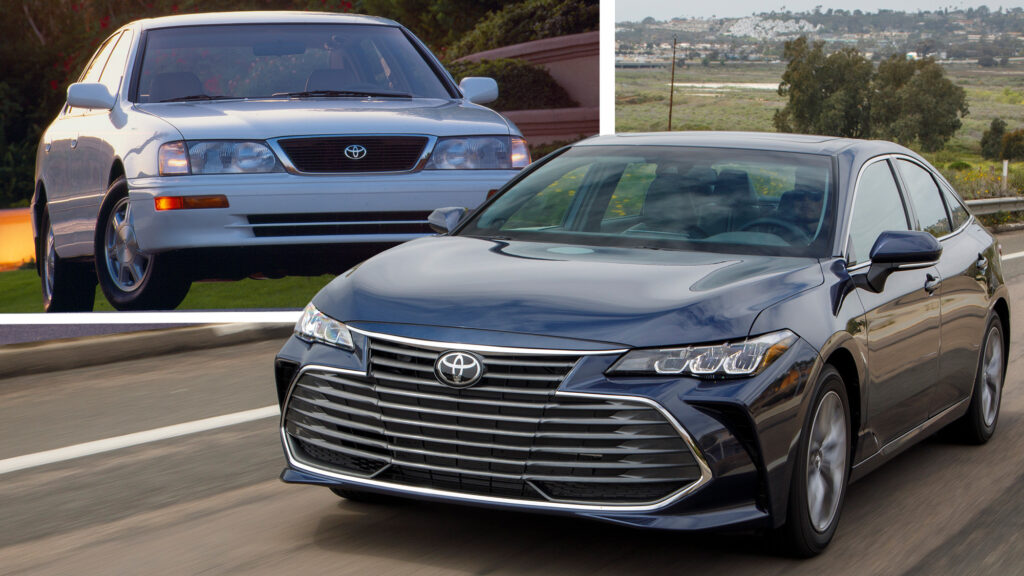
We’ll admit that the grille on the original 1990s Toyota Avalon isn’t particularly small, so you might wonder why its’s here… until you remember that the recently discontinued (in the U.S.) Avalon had such a ginormous grille it looked like someone had kidnapped the poor car and covered its mouth with duct tape to stop it crying out for help.
3. Volkswagen Passat
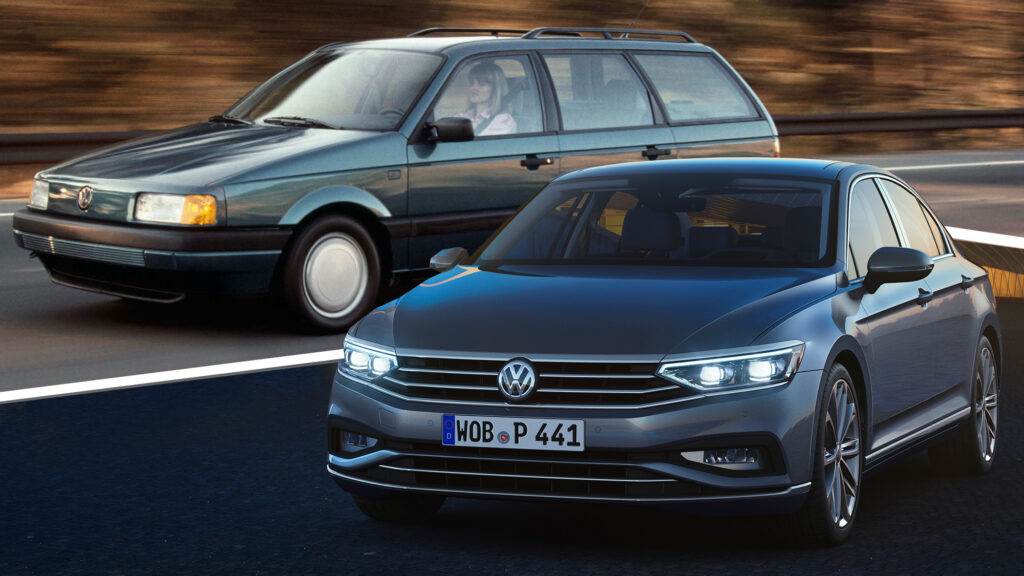
Smooth, grille-less front ends were common on air-cooled, rear-engined sedans in the 1950s and 1960s, including Volkswagen’s Beetle, Microbus and Type 3. And when Volkswagen introduced its B3 Passat in 1988, it introduced the look to its water-cooled lineup.
The B3 did feature a grille of sorts – the VW badge was mounted in a cutout, like the Ford badge on the earlier Taurus – allowing air to flow through to the radiator, though a 1993 facelift brought a more traditional (and definitely blander) look. The American Passat has passed on, but the current European Passat pictured here still features a full grille, albeit maybe not for much longer. Intel suggests the new one will feature a Mk8 Golf-style ultra-slim grille opening.
4. BMW 8-Series
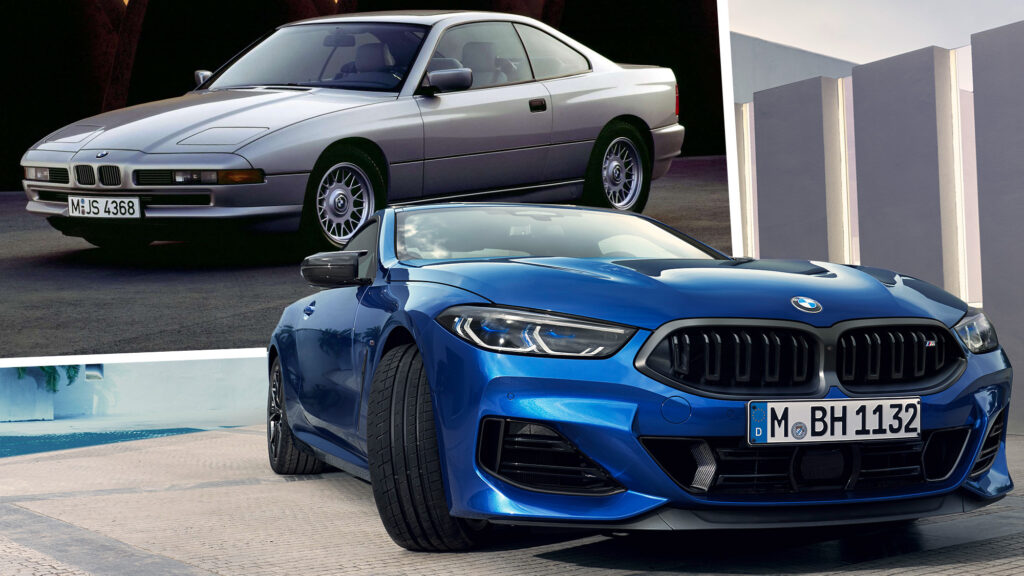
The E31 8-Series borrowed its front-end styling from the M1 supercar introduced a decade earlier and it wasn’t the only BMW available at the time of its 1990 launch to get a micro grille. The Z1 roadster also featured a tiny pair of kidneys, though the 8-Series’ kidneys came with a chrome surround to give a clear link to the sedans of the time.
Though the current 8-Series’ grille is huge in comparison, it’s relatively modest next to the ones fitted to the 4-Series, 7-Series and X7. But who’d bet against any 8-Series successor also getting the XXXL hood-to-floor kidney treatment?
5. Lexus LS
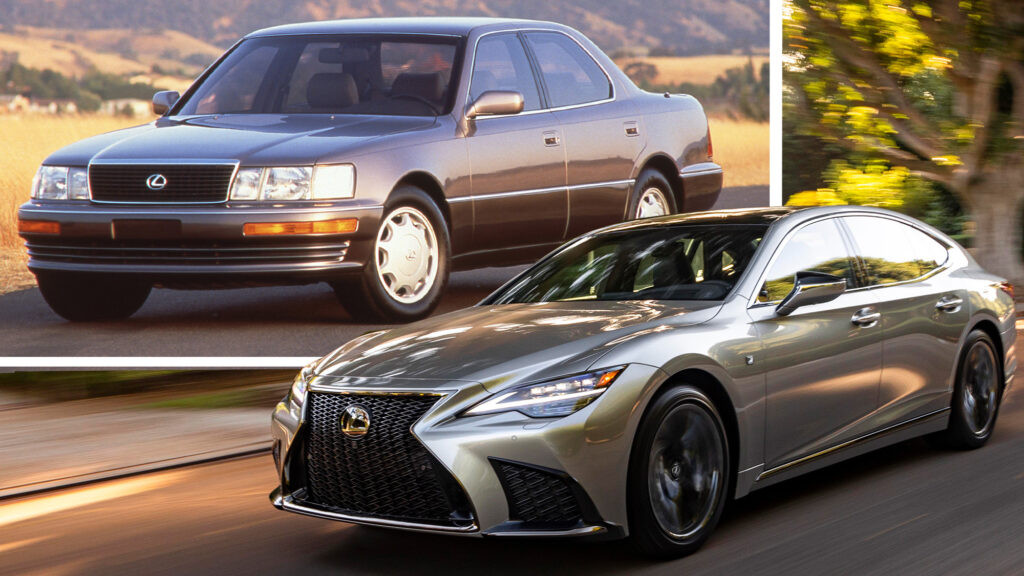
Like its Toyota Avalon cousin, the current Lexus LS seems to devote around 70 percent of its front-end real estate to a grille designed to make up for the fact that the rest of the car is almost completely forgettable.
The way the grille folds in one itself, pulling the surrounding bodywork with it, makes it look like the car has just ingested an anti-aircraft shell through the ‘L’ logo. But at least it’s distinctive, which is more than you could say for the chrome-edged shoebox that passed for a grille on the original LS.
6. Ford Mustang
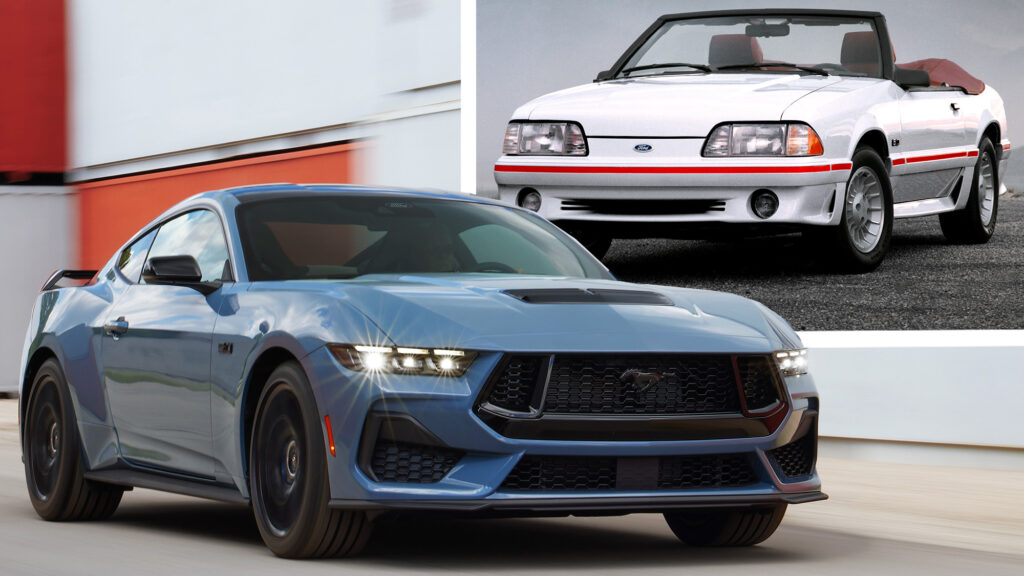
Ford’s 1987 Mustang facelift introduced an aerodynamic look to all models, something previously reserved for the turbocharged SVO. But only the GT versions got the full no-grille treatment, LX models coming with a different bumper that contained a moulded-in grille that reach up between the headlights to meet the hood, and the 1993-only Cobra and Cobra R featured a kind of hybrid of the two styles.
The all-new 2024 Mustang also serves up different grilles for the GT and base models, though in this case they’re both massive compared with the ones fitted to 1987-93 cars.
7. Hyundai Elantra
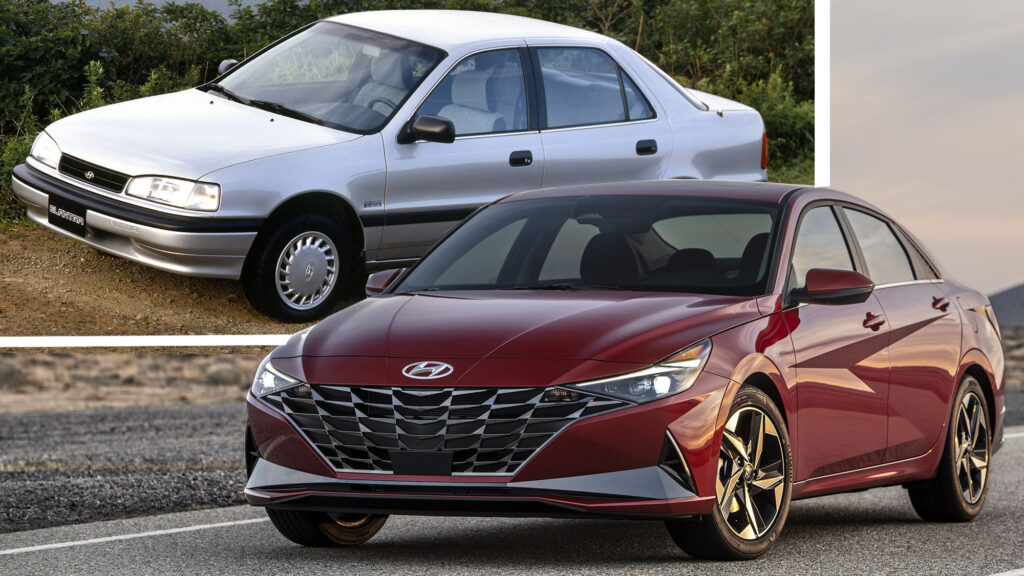
Korea pumps out some of the boldest-looking mass-market cars on the market these days, so it’s almost a shock to be reminded how painfully boring the average Kia or Hyundai was 30 years ago. Without that ‘H’ on the slim grille should be would you really recognize the silver first-generation Elantra pictured here as a Hyundai? But thanks to a weird grille that appears to have been inspired by a shoe rack at a skating rink there’s no mistaking the 2023 Elantra for a Kia or Mazda.
8. Mazda 323 and Mazda3
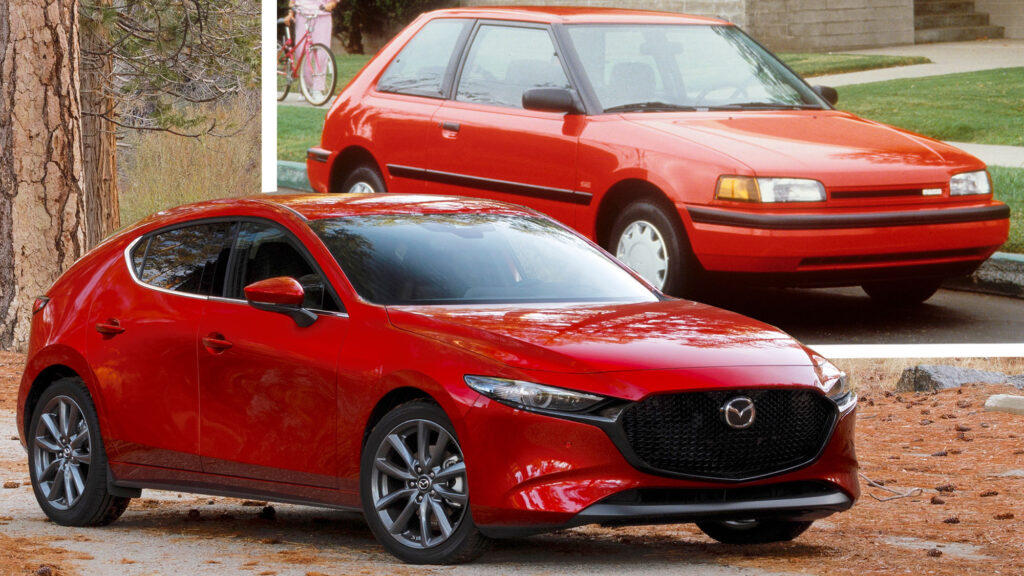
Related: So You Wish BMW Would Go Back To Its Old Grilles, But Which Ones?
With its slim sports car nose, pop-up headlamps and fastback rear, the 1989-94 Mazda 323F/Astina sold in Europe, Asia and Australia was one of the most distinctive family cars of the time. But slab sides and a plain rectangular single slot grille meant the 323 sedan (known as the Protogé in North America) definitely wasn’t, and even the better-looking hatch was fairly anonymous.
Fortunately its modern equivalent, the Mazda3, has more personality thanks to its flowing contours and a much bigger grille, though with so many automakers using a similar grille shape you still wonder whether that Mazda logo in the middle is doing much of the heavy lifting.
9. Ford Fiesta
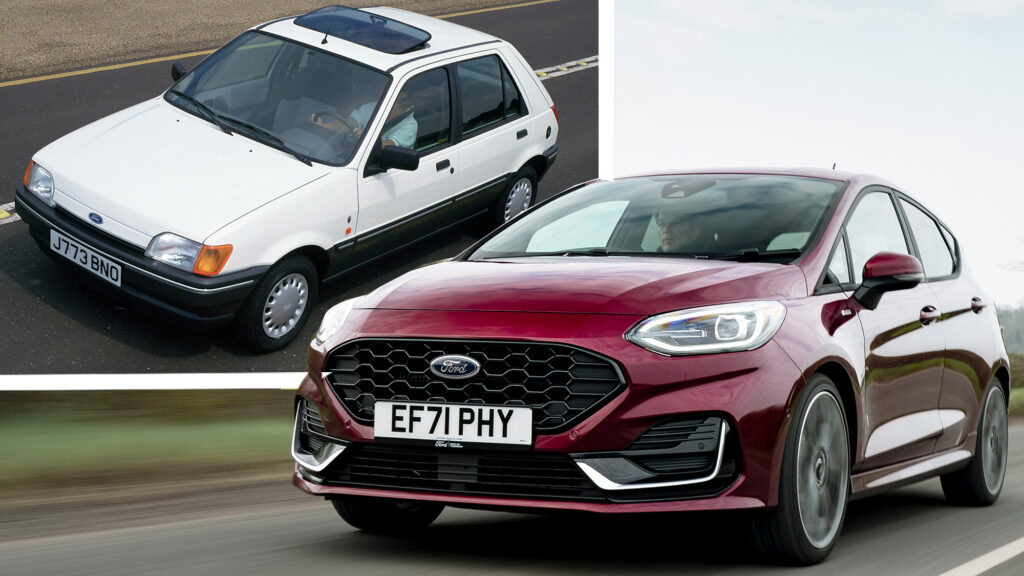
Ford’s 1982 Sierra was an early proponent of the aero look that would dominate 1990s auto design, and when the third generation of its Fiesta little brother appeared in 1989 it also got a taste of the grille-less action.
You won’t find an apologetic narrow air intake slot on the nose of the current Fiesta, though. The seventh-generation Fiesta introduced in 2017 features a version of Ford’s familiar Aston Martin-like grille, but not for much longer. The once-popular supermini is being axed this summer after 47 continuous years in production.
10. Audi A4
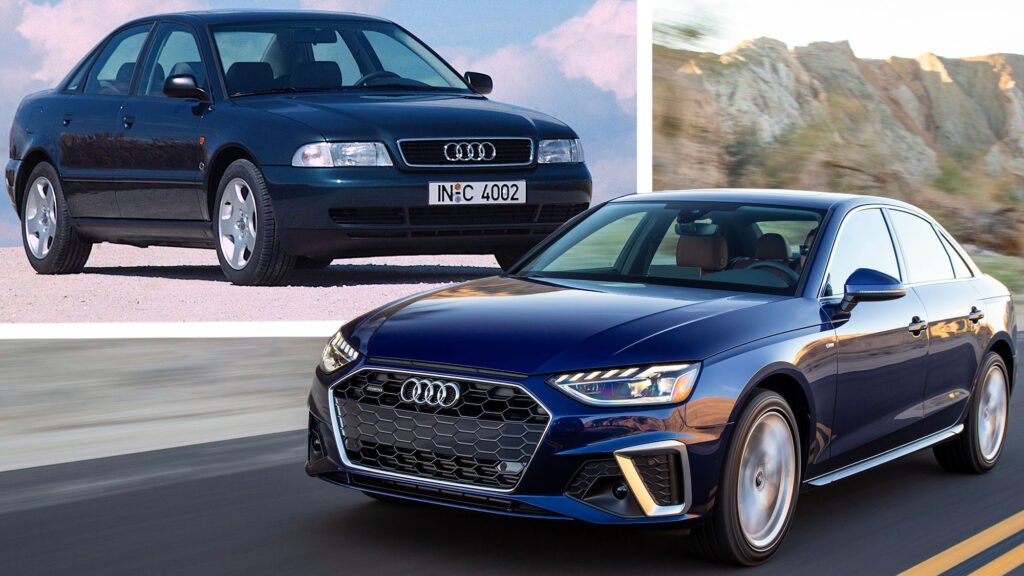
Unlike many automakers, Audi never abandoned its formal radiator grilles in the 1990s. Like BMW did with the E36 3-Series and E39 5-Series, it extended its hoods down to the bumper-line as was the fashion at the time, but then fitted a traditional grille into the hood.
But just look how much smaller the grille is on the 1995 A4 sedan compared with one fitted to the current A4. Audi did hint that jumbo grilles were on the way when it chrome-framed both the lower air intake and upper grille on the 2001 A4, eventually joining the two up for September 2007’s facelift, and the company has stayed true to the look ever since.








